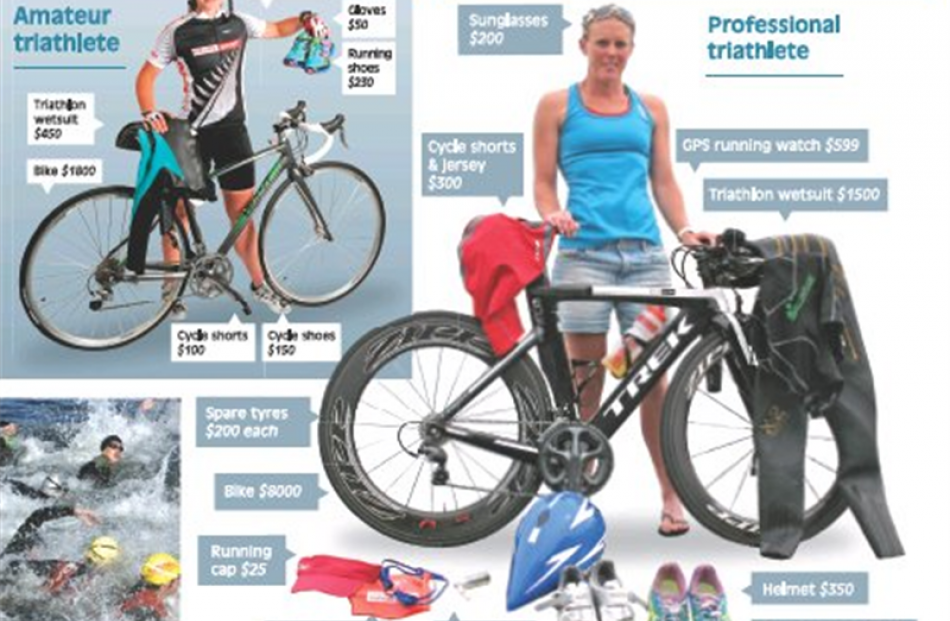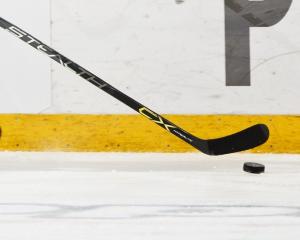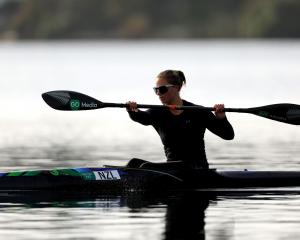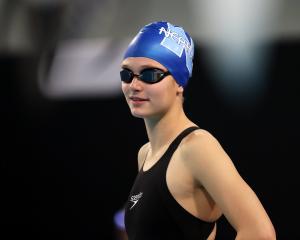Will shelling out several thousand dollars more on gear save Challenge Wanaka triathletes valuable seconds? Would they be lost without a GPS watch? And does the best nutrition come in powdered or potato form? Shawn McAvinue reports.
Triathletes will need to swim 3.8km, bike 180km and run 42.2km to finish the full Challenge Wanaka endurance race tomorrow.
Dunedin professional triathlete Tamsyn Hayes (27) said it was the third time she had competed at Challenge Wanaka and she wanted to finish in the top half of the 10-strong professional women's field.
The top prize was about $12,000, but triathletes did not turn professional in the pursuit of prize purses.
''You definitely have to be passionate about the sport. Nobody is doing it for the money.''
Hayes resigned as a gym manager at Moana Pool to turn professional and trained about 25 hours a week.
She had spent $14,500 on a triathlon bike but it gave her injuries, so she sold it and bought a better-suited bike for $8000.
The most expensive triathlon bike cost about $16,000 but only ''middle-aged men from Auckland'' owned them, Hayes said.
The nutrition of a triathlete was more important than gear, she said.
When racing, her GPS watch beeped every five minutes to remind her to drink. A triathlete could nutritionally ''fake their way'' in the swim and bike leg but those without nutrition plans were found out in the run.
Many nutrition options were available and varied in price, she said.
Energy gel sachets could be eaten every half an hour - about 20 for an iron distance triathlon - and cost about $7 a sachet.
But gels often upset her stomach, so she ate a mini chocolate bar every 45 minutes instead. Some triathletes ate cold potatoes.
Dunedin sports nutritionist Whitney Dagg (25) said she would compete in her first half ironman at Challenge Wanaka but her nutrition plan was the same as a professional's.
A triathlete had to ensure they had enough carbohydrates available for their body weight during the race, she said.
During the race, she ''popped'' carbohydrates every 40 minutes, either an energy gel or five chewy snake lollies.
''Because just gels can get a bit boring.''
Triathletes needed to ensure they regularly hydrated during the race, she said.
Sports drinks were important but they gave some triathletes an upset stomach. Some triathletes watered them down and added salt because the body needed sodium to absorb the fluid. She would be carrying two bottles of sports drink on her bike and another bottle in the back of her cycling top.
Her kit to compete cost her about $6000. The price included a $500 GPS watch but did not include the sunglasses she had borrowed from her father, Dagg said.
She trained up to 15 hours a week for the half distance and was contemplating attempting the full event next year.
''I'll see how it goes and then step it up if I enjoy it.''
Jim Cotter, of the University of Otago school of physical education, said triathletes did not need to spend much on nutrition.
There was no evidence that energy gels provided any more benefit than a quality diet.
''People can spend a huge amount of money for no gain.''
An energy gel was light and convenient. A sandwich could be as nutritious but would become a ''soggy mess'' if carried during a race, Prof Cotter said.
Athletes should not use protein powders and supplements could be detrimental to the performance of a triathlete, he said.
Former Coast to Coast winner Keith Murray set the best time at the multisport event by drinking Raro and eating gingernut biscuits, Prof Cotter said.
Being fit and free from injury, and racing sensibly and strategically, was more important than the amount of money spent on gear, he said.
Knowledge for Rio manager Richard Young, of High Performance Sport NZ, said a triathlete spent more on gear than any other high performance athlete but gains would be made only if competing at Olympic level.
Endurance athletes at the Olympics had similar fitness levels so marginal gains could be made by spending money on expensive gear, he said. Those gains could be the difference between a top-eight placing and a medal.
However, Challenge Wanaka triathletes should concentrate on their nutrition and training rather than on the technology, he said.
''Just enjoy the event and see what your limits are. And don't throttle the bank account.''











